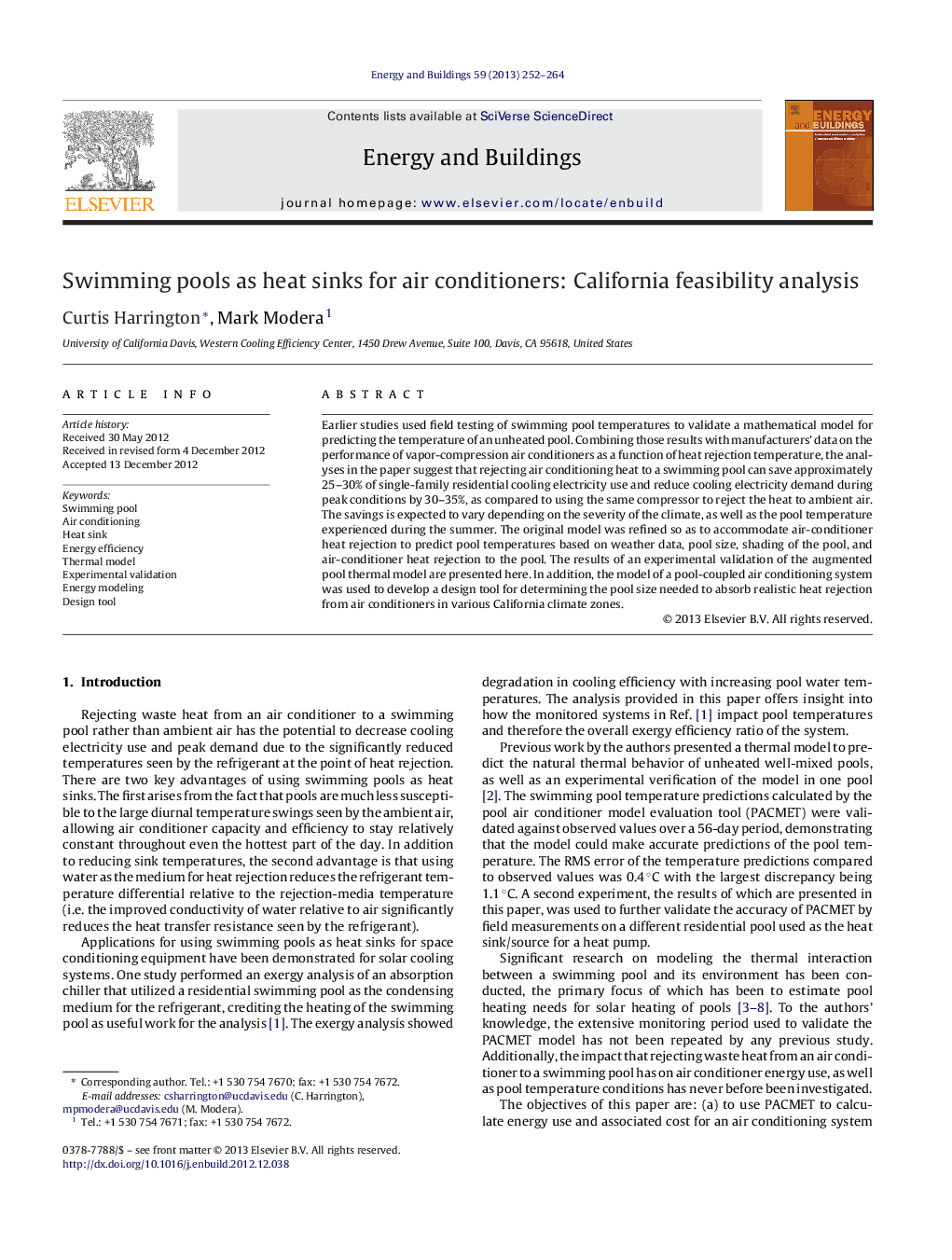| Article ID | Journal | Published Year | Pages | File Type |
|---|---|---|---|---|
| 263505 | Energy and Buildings | 2013 | 13 Pages |
Earlier studies used field testing of swimming pool temperatures to validate a mathematical model for predicting the temperature of an unheated pool. Combining those results with manufacturers’ data on the performance of vapor-compression air conditioners as a function of heat rejection temperature, the analyses in the paper suggest that rejecting air conditioning heat to a swimming pool can save approximately 25–30% of single-family residential cooling electricity use and reduce cooling electricity demand during peak conditions by 30–35%, as compared to using the same compressor to reject the heat to ambient air. The savings is expected to vary depending on the severity of the climate, as well as the pool temperature experienced during the summer. The original model was refined so as to accommodate air-conditioner heat rejection to predict pool temperatures based on weather data, pool size, shading of the pool, and air-conditioner heat rejection to the pool. The results of an experimental validation of the augmented pool thermal model are presented here. In addition, the model of a pool-coupled air conditioning system was used to develop a design tool for determining the pool size needed to absorb realistic heat rejection from air conditioners in various California climate zones.
► Rejecting air conditioner heat to a pool can save 25–30% of cooling energy use. ► An experimentally validated pool thermal model is used to predict energy savings. ► A tool for determining the pool size needed to absorb A/C loads is developed. ► Sensitivity to climate zone of pool-coupled air conditioners is presented. ► Simple payback can be long with the current cost of water-source air conditioners.
